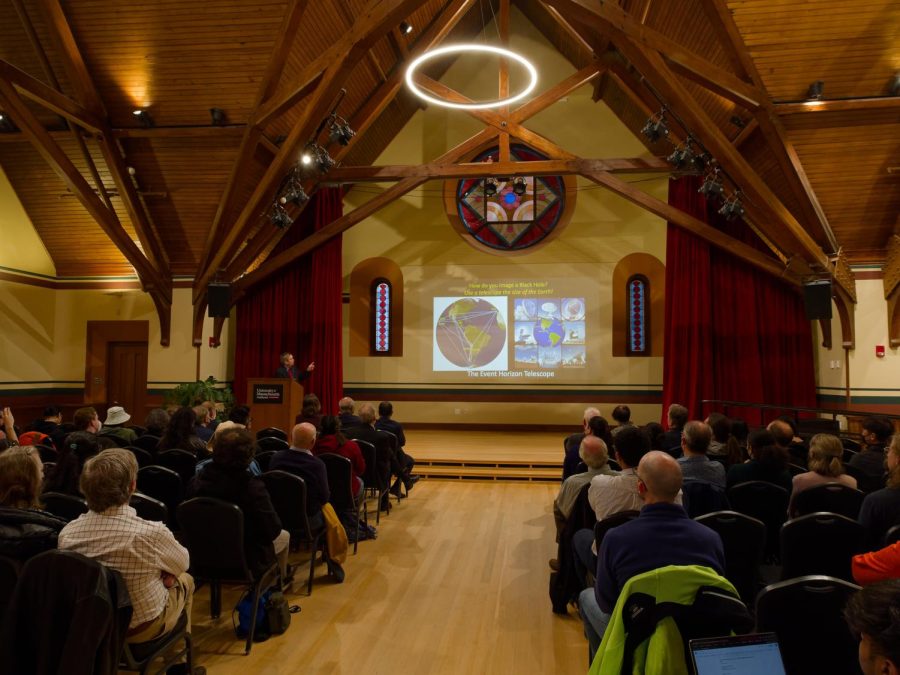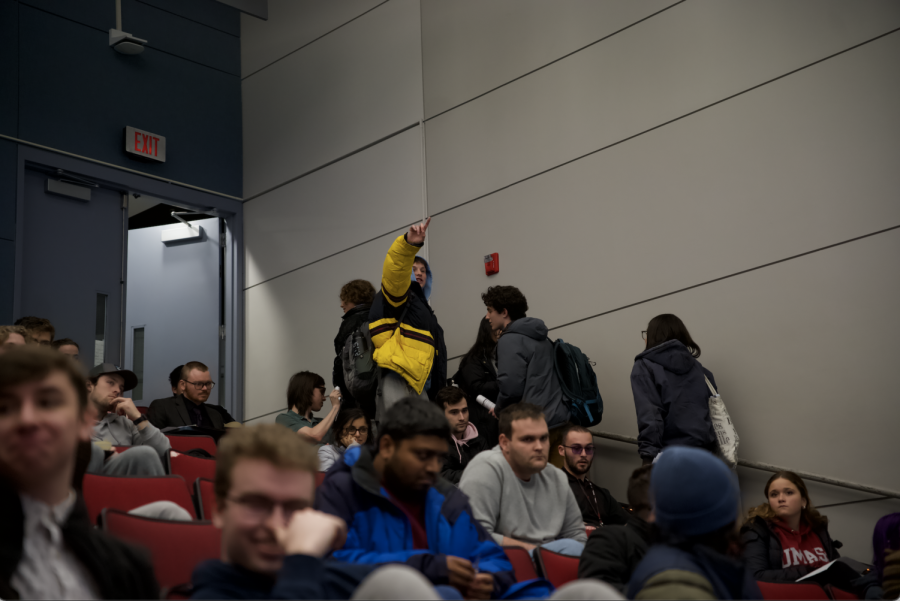In addition to the formal education students learn in science classrooms, they are also exposed to a large amount of informal education – commonly accepted truths taught in the media or by word of mouth that may actually be misconceptions, visiting professor David Lustick said yesterday.
Lustick, an assistant professor at the University of Massachusetts Lowell, began his Science Technology, Engineering and Mathematics (STEM) seminar in Hasbrouck Laboratory yesterday by asking science faculty members to complete a simple task – examine their fingernails.
Lustick noted that there is a commonly accepted idea that gender determines how one looks at their fingernails. Men curl their hands in palms up to look at their fingernails, while women hold their hands out, fingers up, straight in front of them, he said.
“Where did I come up with this knowledge [and] acquire this understanding? It didn’t come to me in a dream,” said Lustick. “I thought about it [and realized that] I got it at recess in sixth grade.”
Lustick’s talk, “Finger Nails and Factoids: The Impact of Informal Learning on Formal Science Education,” explored other examples – which he called “factoids” – such as humans using only 10 percent of their brains, the toilet bowl swirling the opposite way on the other hemisphere and how eggs balance on their end during an equinox.
“All day long [we are] bombarded with ideas [that our] minds are constantly processing,” he said. “Informal science learning is unfiltered, unevaluated, unaccountable, ubiquitous. It’s everywhere all the time.”
This creates a challenge for educators, said Lustick, especially when students enter the classes with expectations based on things they learned in informal settings.
“When you find this information, there is no citation,” he said. “As a scientist we want to know about validity. Any of these could be tested for validity in a classroom.”
Continuing with the fingernail example, Lustick listed several other factoids that could be checked in various science classrooms. Do fingernails grow at the same rate that continental plates shift? Students in physics classrooms could measure lengths and plate velocity rates over a period of time to test this factoid, said Lustick. Will nails dissolve if put into a cup of Coca-Cola for hours? The chemical properties of nails could be tested in chemistry classes, he said.
Before beginning any class, Lustick suggests that instructors do a pre-assessment to examine ideas students may already have on a topic. This will allow them to structure a curriculum-based on the range of ideas present in the class.
“Students’ minds are anything but empty,” he said. “But what do they know about a particular topic in class? What are their ideas and where did they get them?”
Lustick said that one of the largest sources of this informal education is the media. He described it as the “biggest educator in society.”
“In the past the media told us that smoking was healthy and DDT was harmless. That was a form of informal science learning,” he said. “In the media today you can hear really clearly that evolution is just a theory, that climate change is a hoax, that Bigfoot is alive and well living on the West Coast [and] that ghosts live in our homes. You can’t be surprised when students enter the classroom and think these things. They’re bombarded with it.”
It’s important for teachers to help educate students on the difference between what they learn in informal and formal learning settings, according to Lustick.
“Media messaging can run the gamut from innocent to insidious,” he said. “In the age of Google, we have a duty to help students understand the difference and evaluate the accuracy of information.”
Lustick is hosting a “Carbon Smarts Conference” at UMass Lowell next month on Oct. 20 and Oct. 21. The conference will examine “how to use media to foster public science education,” such as posting posters about science inside mass transit vehicles. The conference will include professionals from both the science and communications/marketing fields, said Lustick. He is hoping “for cross-pollination, some learning in both directions.”
People interested in registering for the conference can do so at UML.edu/CarbonSmarts.
Lustick told the audience that he had 12 years of teaching experience with an area of expertise in chemistry. His UMass Lowell profile said he is an alumnus of Cornell, Harvard and Michigan State Universities.
Chris Shores can be reached at [email protected].






